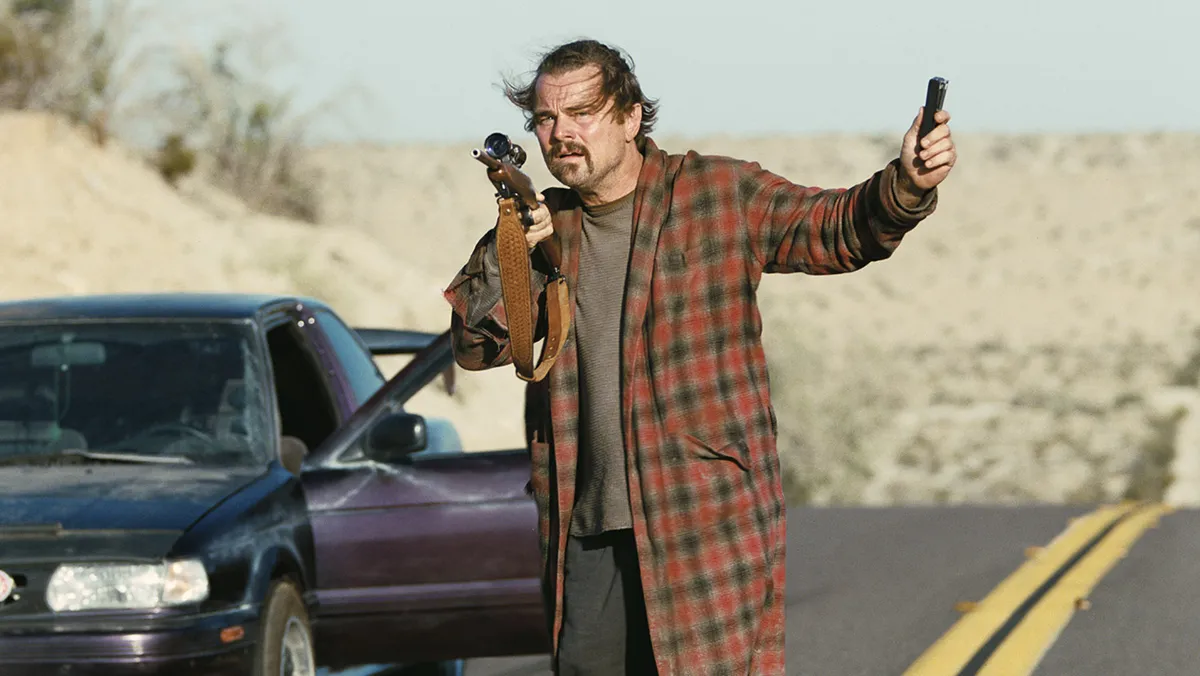
The much-anticipated film, One Battle After Another, directed by Paul Thomas Anderson, has captivated audiences and critics alike, earning the title of “the movie of the year” on social media platforms. This nearly three-hour cinematic experience serves as a loose adaptation of Thomas Pynchon’s Vineland and features the renowned actor Leonardo DiCaprio in a compelling role. The film has successfully drawn significant attention as a mature drama, receiving high praise from critics, impressive audience ratings, and a robust box office performance, surpassing the remarkable milestone of $100 million globally—marking the biggest opening of Anderson’s illustrious career.
What makes One Battle After Another particularly intriguing is its intense political undertones. The narrative follows a disillusioned revolutionary, played by DiCaprio, who is on a mission to rescue his daughter, portrayed by Chase Infiniti, from a dangerous white nationalist military officer (played by Sean Penn). The film opens with a dramatic raid on an ICE facility aimed at liberating detainees, showcasing government agents executing unarmed individuals and infiltrating peaceful protests to incite violence. This politically charged content seems to have generated less reaction from conservative audiences compared to more mainstream offerings, such as a family classic remake like Snow White and the Seven Dwarfs.
Despite the film's success, it has faced criticism from some conservative commentators who argue that it represents a misguided perspective. Ben Shapiro remarked that the film serves as an “apologia for radical left-wing terrorism,” predicting it would sweep the Academy Awards due to its overt political leanings. He criticized the film for portraying the United States as governed by “white supremacist Christian nationalists” while suggesting that the narrative undermines family and social connections in favor of chaotic rebellion.
In a similarly critical tone, David Marcus from Fox News described the film as an “ill-timed apologia for left-wing violence,” arguing that it presents a dangerous narrative. He noted that for the film to resonate, viewers must accept the premise that the United States is currently a fascist regime, a notion he deemed not only fallacious but potentially hazardous in today’s political climate.
The National Review echoed these sentiments, pointing out the film's romanticization of political assassination. The publication warned that the film could incite “bloodlust” among viewers, particularly in light of real-world events. They criticized Anderson for seemingly glorifying past and present violent actions taken by the left, suggesting that One Battle After Another embodies irresponsible filmmaking that perpetuates a culture of political pandemonium.
Even The Blaze weighed in, highlighting a disconnect between the film’s portrayal of political activism and the real-world implications of such actions. The review noted that the film's celebration of violence and radicalism encourages a divisive perspective where political differences are treated as moral failings, rather than legitimate policy debates.
Contrasting these critical viewpoints, many reviewers have interpreted One Battle After Another as a satirical fantasy rather than a serious political statement. Critics noted that the film’s exaggerated elements—such as its portrayal of a conspiratorial white supremacist group and a highly organized left-wing resistance—diverge from reality, leaning more towards a parody of political extremism. David Klion from The New Republic argued that the film’s depiction of a left-wing revolutionary group fighting back is less credible than the right’s portrayal of an organized “antifa supersoldiers.”
Interestingly, audience reactions have varied significantly. Many viewers reportedly enjoyed the film, laughing and cheering throughout, even as they observed the unsettling depictions of immigrant families facing federal aggression. This duality of experience highlights the complex nature of One Battle After Another and its reception among diverse audiences.
In summary, One Battle After Another stands out not only for its cinematic achievements but also for its provocative themes and the polarized reactions it has elicited. As it continues to make waves in the film industry, the movie serves as a focal point for discussions surrounding politics, art, and the role of cinema in reflecting societal issues.